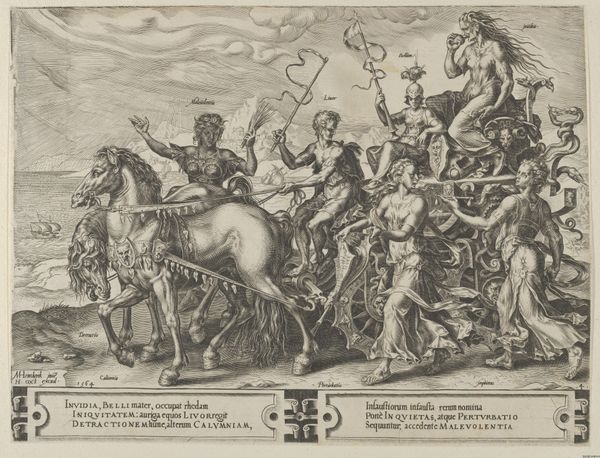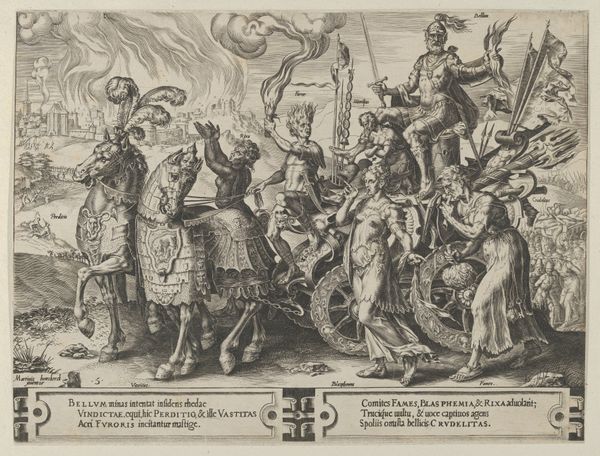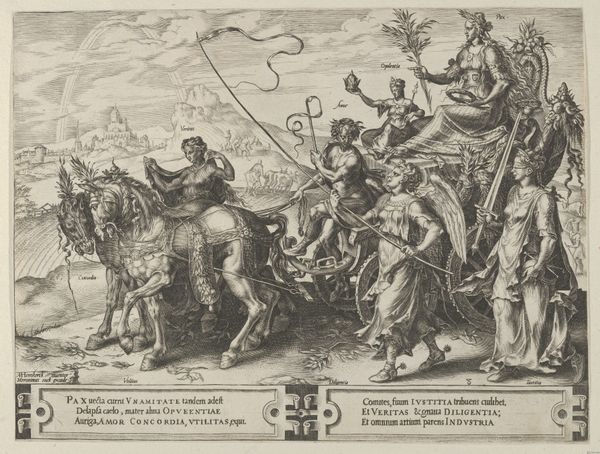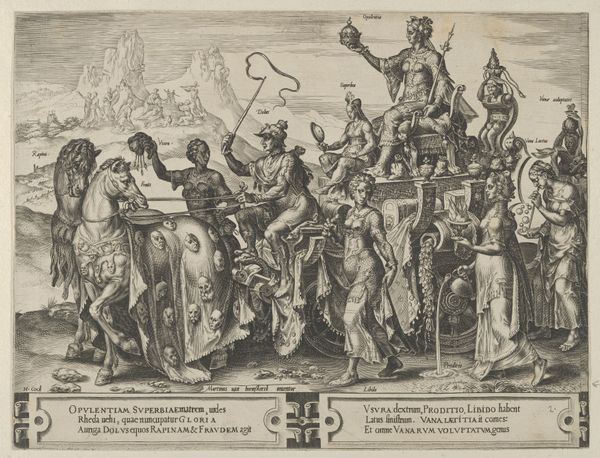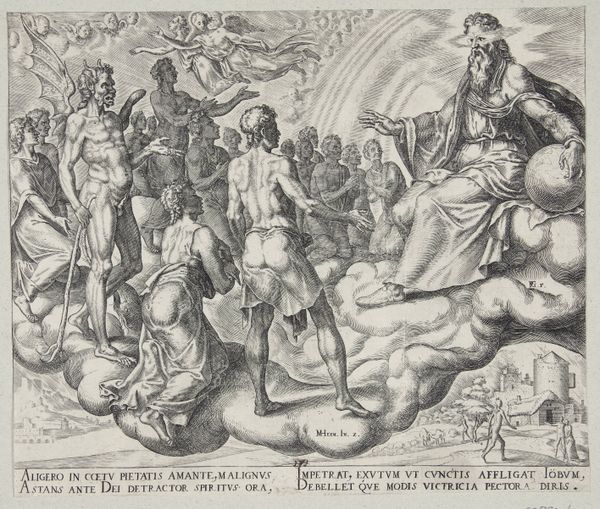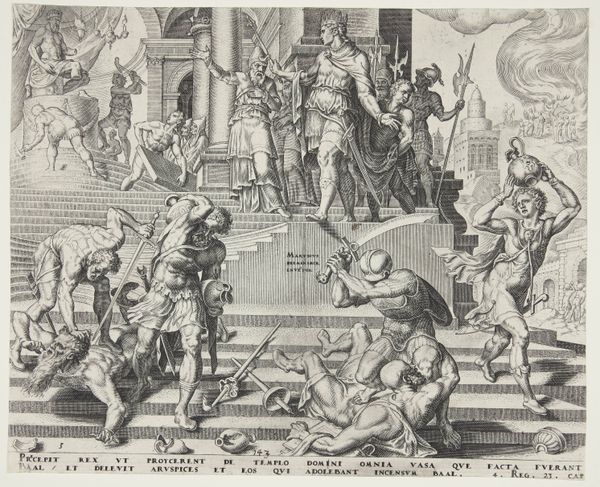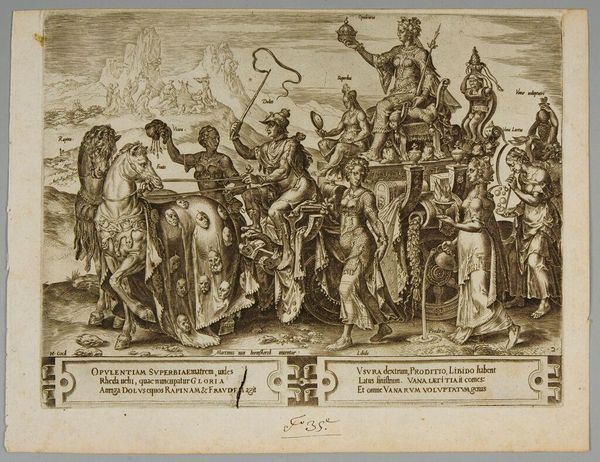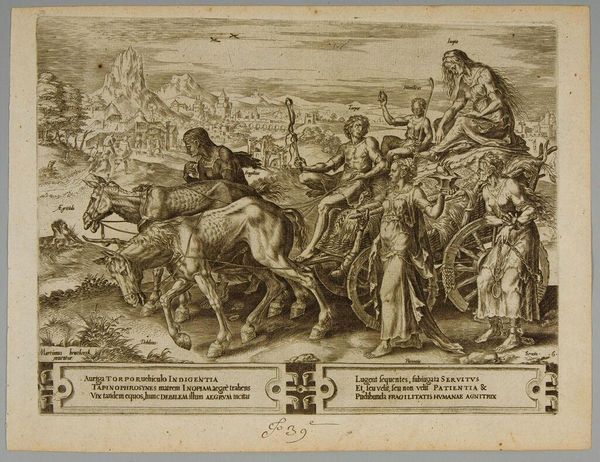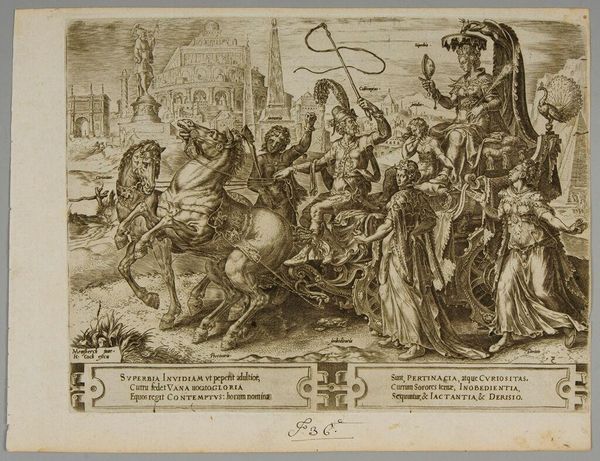
The Triumph of Pride, from The Cycle of the Vicissitudes of Human Affairs, plate 3 1564
0:00
0:00
print, engraving
#
allegory
# print
#
mannerism
#
figuration
#
11_renaissance
#
horse
#
men
#
history-painting
#
engraving
Dimensions: Sheet: 8 15/16 × 11 5/8 in. (22.7 × 29.5 cm)
Copyright: Public Domain
Editor: Okay, so we're looking at Cornelis Cort's "The Triumph of Pride" from 1564. It's an engraving, and immediately I'm struck by the almost overwhelming detail and the very deliberate way the artist has presented this procession. There's almost too much going on; what is your take on this piece? Curator: The over-the-top nature of this print speaks volumes. Remember, this is the mid-16th century; the Reformation is shaking Europe. Prints like these circulated widely and were instruments of cultural debate. This image visualizes ‘pride’ as a destructive force. The triumphant figure sits in her chariot, but look closer: Who does she think she is? Where is she going, and what societal critiques can we find? Editor: The chariot's being pulled toward what looks like a ruined classical city... but it also feels like this "Pride" figure is disconnected from the chaos she is whipping up. It seems she’s surrounded by a throng of supporting figures, each representing a related vice? Curator: Precisely! Cort depicts Pride surrounded by her 'entourage'-- Vana Gloria, Contemptvs, Inobedientia—all feeding off of the central figure's ego. This work offers insight into Renaissance anxieties about societal decay. Consider, for a moment, how this depiction contrasts with the ideal of virtuous leadership promoted during the same period. Editor: So, is it then saying that pride corrupts institutions and undermines good governance? It seems like a commentary on vanity and self-importance destroying foundations... the actual city crumbling! Curator: Exactly! It also invites the viewer to perform their own moral evaluation. Is the ruling class succumbing to vainglory? And perhaps more pointedly, are you susceptible to such temptations? What, for Cort, are the signs that society's morals are decaying? Editor: I never would have noticed this as cultural criticism initially. Thanks, now I can really appreciate the statement it's making! Curator: And understanding that is key to truly "seeing" a work of art from any period. It requires looking not just at what's presented but at the context surrounding the creation.
Comments
No comments
Be the first to comment and join the conversation on the ultimate creative platform.
